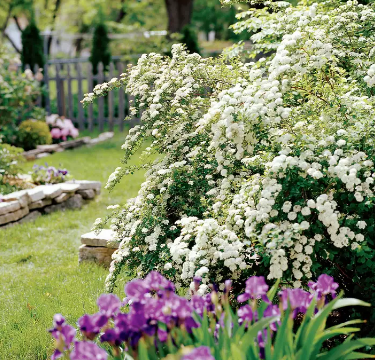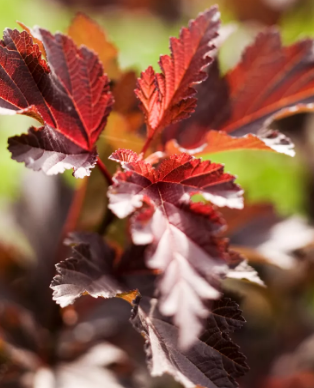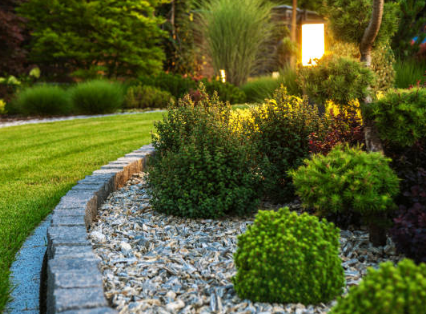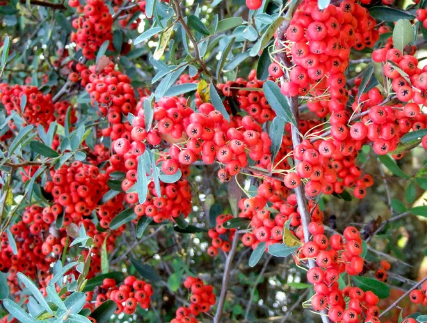Shrubs come in a variety of sizes, shapes, flowers, and leaves, and using shrubs for landscaping can turn a bland backyard into a beautiful and vibrant display. These sturdy plants help fill the flower bed and solidify the base plants, making your yard more attractive.
Flowering varieties add extra color and sweet aromas. Depending on where you live and the conditions in your yard, different shrubs can add evergreen textures, ground cover on slopes, and even add privacy by blocking out street noise. They also help protect the soil from erosion and provide food and shelter for wildlife.
Here are various important characteristics to consider when picking the best shrub for your yard.
Types of Shrubs and Bushes

Before diving into the different types of shrubs and shrubs used for landscaping, you might be wondering what exactly they are. In general, they are plants with multiple woody stems and do not usually die back to the ground during the winter months (which most perennials usually do). However, some trees, such as serving berries, can have multiple woody stems, so some experts further distinguish shrubs, saying they are less than 10 feet tall.
There are exceptions to this rule, which has led to the emergence of the word “trub” to mark plants that can’t seem to be sure whether they are trees or shrubs.
Shrubs can be deciduous (meaning they lose their leaves every winter) or evergreen. Some shrub families include both types, such as holly. There are also conifer (evergreen plants that bear cones) species, such as many juniper and yew.
Shrub Leaf Color
The leaves of the shrubs used for landscaping come in almost every color, even close to black, such as the “black lace” elderberry ($21, Home Depot). Even the pure green deciduous varieties turn bright colors in the fall. The evergreen shrub, despite its name, offers a fantastic array of leaf colors in addition to green, including muted blue, yellow, yellow or cream and variegated green. These shades look even more striking in the snow-covered winter landscape. When choosing a bush or shrub for landscaping, consider how they will look in all seasons.

Shrub Shape and Form
In addition to the usual upright, circular structure, landscape shrubs can be drooping (branches hanging down), creeping (branches are low and grow outward, which is ideal for covering slopes) and pruned into interesting shapes. Some species have dwarf forms, especially conifers, which are a good choice for smaller lands.
Drought-Tolerant Options
Most shrubs are very drought tolerant once established compared to many smaller plants (in the first year after planting, you need to make sure your shrubs are well hydrated so that the roots have a chance to grow). Unfortunately, in some parts of the country, you can’t always count on rain to water your plants. So, if you want to use less water in your garden, choose shrubs that can tolerate dry conditions. Some examples are verium, meadowsweet, and many viburnum plants.
Avoid Deer Injuries
Deer can damage shrubs by gnawing on their branches, fruits, and leaves. Gardeners across the country are always on the lookout for ornamental plants that deer won’t touch. Lists vary from region to region (and even by community), but many of them feature certain types of plants. Consider prickly or thorny shrubs, resin woods, aromatic leaves, and hairy leaves.

Advantages of Native Shrubs
Native shrubs are also a good choice. Because they have been in the same area for centuries, they have adapted to the local climate and soil conditions. They also have a number of low-maintenance advantages: they usually don’t require additional watering, tend to be resistant to pests and diseases, and are a favorite of local wildlife. Some options that combine aesthetic and low-maintenance benefits include:
- American Arborvitae
- American Beautyberry
- American Holly
- Bayberry
- Bottlebrush Buckeye
- Carolina Allspice
- Chokeberry
- Dwarf Phosegira
- Mountain Laurel
- Oakleaf Hydrangea
- Oregon Grapeholly
- Rhododendron (several)
- Sweet Pepperbush
- Virginia Sweetstahl

Shrubs That Attract Wildlife
Many shrubs with berries, both native and non-native, attract birds and other wildlife. These include:
- Blueberry
- Cotoneaster
- Dogwood
- Euonymus
- Firethorn
- Holly
- Juniper
- Viburnum
- Waxy myrtle

